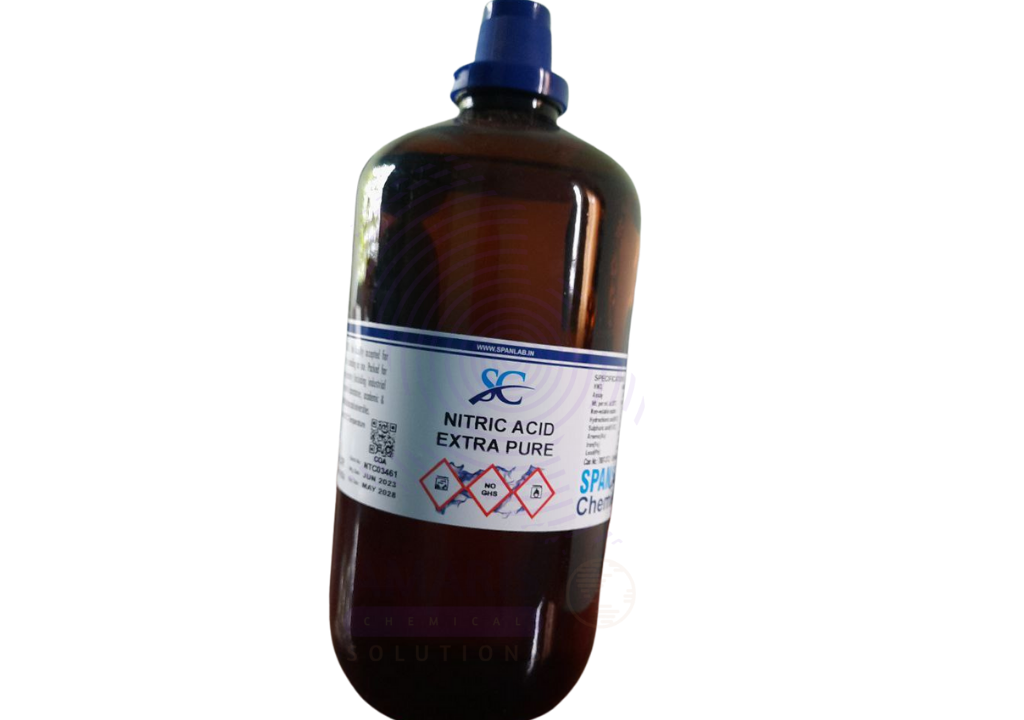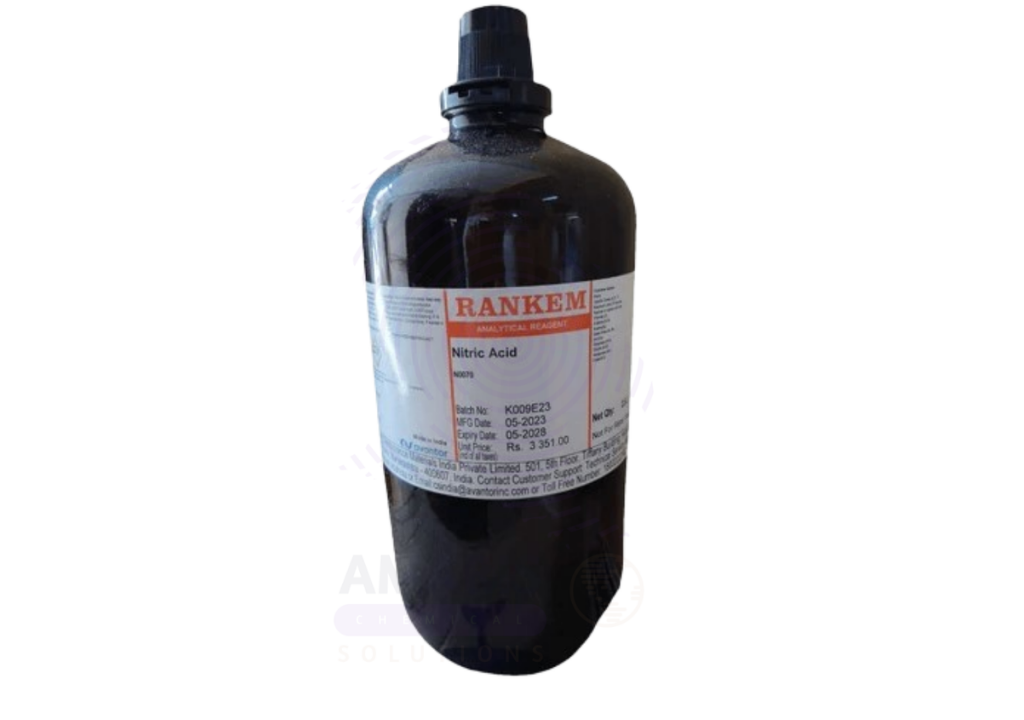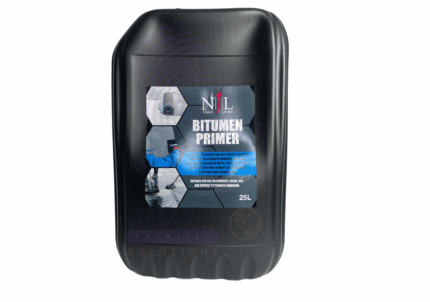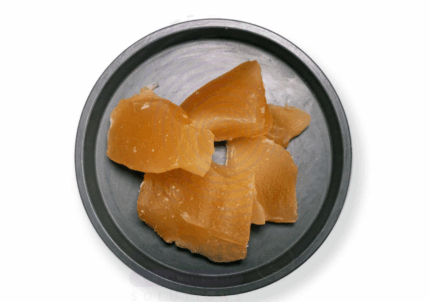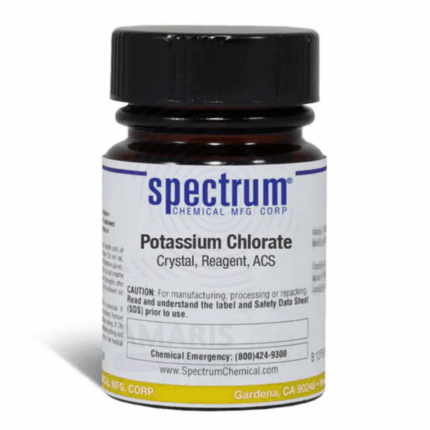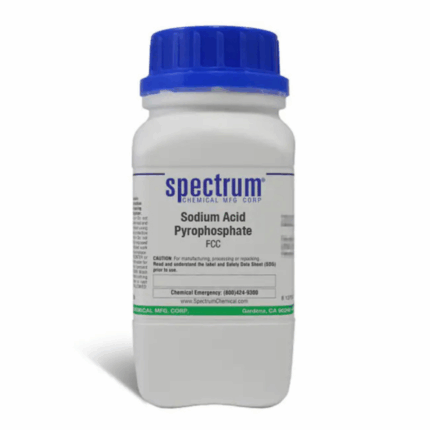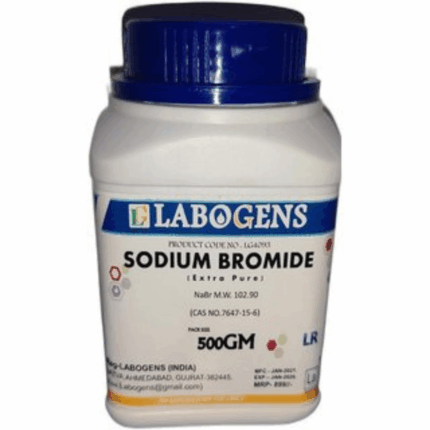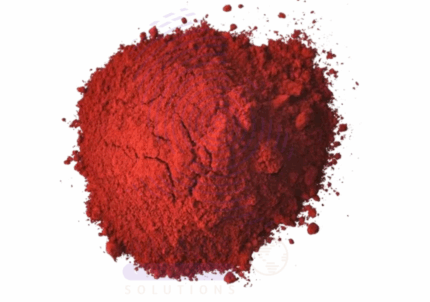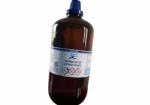
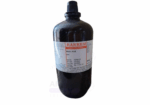
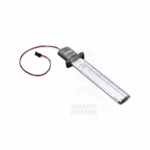
Nitric Acid Extra pure
$ 30.40 Original price was: $ 30.40.$ 30.34Current price is: $ 30.34.
Nitric Acid Extra pure is a high-purity, concentrated mineral acid supplied in a secure 2.5-litre packaging, ideal for laboratory and industrial applications requiring precision and consistency. Known for its strong oxidizing properties, nitric acid (HNO₃) is widely used in analytical chemistry, metal etching, sample digestion, and nitrate salt preparation.
This Extra Pure grade ensures minimal contaminants, making it especially suitable for trace analysis, high-purity synthesis, and quality control laboratories. Its sharp, acrid odor and highly corrosive nature demand careful handling with proper personal protective equipment (PPE), including acid-resistant gloves, goggles, and fume hoods. It must be stored in tightly sealed, compatible containers away from organic materials, bases, and flammable substances. This reagent is essential in both academic research and industrial processes involving nitration reactions, fertilizer formulation, and explosives development.
Nitric Acid Extra Pure
Primary Uses
- Reactant in Inorganic Synthesis & Nitration
- Used to produce a wide range of metal nitrates (e.g., silver nitrate, copper nitrate, ammonium nitrate) through direct reaction with metals, metal oxides, hydroxides, or carbonates.
- Serves as a potent nitrating agent to introduce nitro-groups (-NO₂) into organic molecules, a key step in producing explosives (e.g., nitroglycerin, TNT), dyes, and pharmaceuticals.
- Oxidizing Agent in Chemical Reactions
- Employed to oxidize metals to their highest oxidation states; for example, it oxidizes copper to copper(II) ions and can passively oxidize metals like aluminum and chromium.
- Used to dissolve metals that are otherwise resistant to other acids (e.g., the dissolution of silver or the passivation of aluminum).
- A key component in aqua regia(a 1:3 mixture with hydrochloric acid) for dissolving noble metals like gold and platinum.
- Precursor for Fertilizer and Explosive Manufacturing
- Industrially, a massive portion of nitric acid production is used in the Ostwald process to create intermediates for ammonium nitrate fertilizers.
- It is essential for the production of nitrocompound-based explosives and blasting agents.
- Etching and Metal Passivation
- Used to etch and clean metal surfaces, particularly copper and brass in metalworking and electronics fabrication.
- Applied to passivate stainless steel by forming a protective, inert oxide layer on the surface, enhancing corrosion resistance.
Secondary Uses
- Analytical Chemistry and Digestions
- A primary acid used in “wet digestion” techniques to dissolve heavy metal traces and other analytes from samples (e.g., soil, tissue, polymers) prior to analysis by ICP-MS or AAS.
- Used in colorimetric tests, such as the classic “brown ring test” for the qualitative identification of nitrate ions.
- Teaching Tool in Redox and Acid-Base Chemistry
- Ideal for classroom demonstrations showcasing its dual nature as a strong acid and a powerful oxidizing agent, with reactions varying based on concentration (e.g., the different reactions of concentrated vs. dilute nitric acid with copper).
- Used to demonstrate passivation phenomena with metals like iron and aluminum.
- Purification and Laboratory Reagent
- Used to purify and clean laboratory glassware by removing organic residues and metallic impurities due to its strong oxidizing power.
- Acts as a stabilizing agent in quantitative analysis, for instance, to preserve and stabilize solutions of metal ions like mercury(II).
- Doping Agent in Semiconductor Technology
- In microelectronics, nitric acid solutions are used in the doping process to create p-n junctions in silicon wafers by introducing specific impurities.
- Used in the etching and patterning of semiconductors during device fabrication.
| PACK SIZE |
2.5 Litres Glass bottle |
|---|
1. Basic Identification Attributes
- Chemical Name: Nitric Acid
- CAS Number: 7697-37-2
- HS Code: 2808.00.00
- Molecular Formula: HNO₃
- Synonyms:
- Aqua fortis
- Spirit of niter
- Azotic acid
2. Physical & Chemical Properties
- Physical State: Liquid
- Color & Odor: Colorless to yellowish with acrid, choking odor
- Boiling Point: ~83 °C (depending on concentration)
- Melting Point: −42 °C
- Density: ~1.51 g/cm³ (for 68–70% nitric acid)
- Solubility: Miscible with water in all proportions
- pH Level: <1 (very strongly acidic)
- Vapor Pressure: ~48 mmHg at 20 °C
- Flash Point: Not flammable but can intensify fire (oxidizer)
- Autoignition Temperature: Not applicable
- Viscosity: 1.1–1.5 cP at 25 °C
3. Safety & Hazard Attributes
- Hazard Class (GHS Classification):
- Oxidizing liquids (Category 3)
- Skin corrosion (Category 1A)
- Eye damage (Category 1)
- NFPA Ratings:
- Health: 3
- Flammability: 0
- Reactivity: 3
- Exposure Limits:
- OSHA PEL: 2 ppm (5 mg/m³)
- ACGIH TLV: 2 ppm (TWA), 4 ppm (STEL)
- Reactivity: Highly reactive with reducing agents, organic materials, and metals. Violent reactions possible.
4. Storage & Handling Attributes
- Storage Conditions:
- Store in a cool, well-ventilated, and corrosion-resistant area
- Away from sunlight, heat, and incompatible materials
- Incompatible Materials:
- Organic compounds, flammable substances, reducing agents, bases, and metals
- Container Type: Acid-resistant containers (e.g., HDPE with vented caps)
- Shelf Life & Expiration Date: ~1–2 years; sensitive to light and air
- Special Handling Requirements:
- Use in a fume hood
- Wear acid-resistant gloves, goggles, face shield, and lab coat
- Use secondary containment when transporting
5. Regulatory & Compliance Attributes
- Regulatory Status:
- Regulated by OSHA, EPA, DOT, REACH
- Listed on TSCA inventory
- Transportation Restrictions:
- UN Number: UN2031
- Hazard Class: 8 (Corrosive), 5.1 (Oxidizer)
- Waste Disposal Method:
- Must be neutralized and disposed of via licensed hazardous waste handler in compliance with RCRA regulations
- Environmental & Health Impact
- Ecotoxicity: Harmful to aquatic life due to low pH
- Persistence in Environment: Does not persist; reacts and dilutes quickly
- Carcinogenicity/Mutagenicity:
- Not classified as carcinogenic by IARC or OSHA
- Biodegradability: Not applicable; reacts into nitrate ions and water
SAFETY PRECAUTIONS
Personal Protective Equipment (PPE):
- Wear acid-resistant lab coats, nitrile or neoprene gloves, and chemical splash goggles.
- Use a face shield and work in a well-ventilated fume hood.
- Use acid-resistant aprons and boots when handling large volumes.
Handling:
- Handle with extreme care; nitric acid is highly corrosive and oxidizing.
- Avoid contact with skin, eyes, and clothing.
- Never mix with organic materials, reducing agents, or flammable substances.
- Use only with proper ventilation and avoid inhalation of vapors.
Storage:
- Store in a cool, dry, well-ventilated acid storage cabinet.
- Keep the container tightly closed and upright.
- Segregate from organic materials, bases, combustibles, and other incompatible chemicals.
- Use only containers resistant to strong acids (e.g., glass or Teflon-lined materials).
FIRST AID MEASURES
Inhalation:
- Move the person to fresh air immediately.
- Provide oxygen if breathing is difficult.
- Seek immediate medical attention.
Skin Contact:
- Immediately flush skin with plenty of water for at least 15 minutes.
- Remove contaminated clothing.
- Seek medical attention even if no symptoms appear.
Eye Contact:
- Rinse cautiously with water for at least 15 minutes.
- Remove contact lenses if present and easy to do.
- Continue rinsing and seek immediate medical help.
Ingestion:
- Do not induce vomiting.
- Rinse mouth thoroughly with water (do not swallow rinse water).
- Seek immediate medical assistance.
FIRE FIGHTING MEASURES
Flammability:
- Nitric acid is not flammable, but it is a strong oxidizer and can intensify fires.
Extinguishing Media:
- Use dry chemicals, carbon dioxide (CO₂), or water spray.
- Do not use straight water streams on acid; it may cause splattering.
Hazardous Combustion Products:
- Emits toxic and corrosive fumes including nitrogen oxides (NO, NO₂).
Firefighter Protection:
- Wear self-contained breathing apparatus (SCBA) and acid-resistant full protective gear.
- Cool containers with water spray from a safe distance.


 Preservatives(food)
Preservatives(food) Flavor Enhancers
Flavor Enhancers Acidulants
Acidulants Sweeteners
Sweeteners Antioxidants
Antioxidants Colorants(food)
Colorants(food) Nutraceutical Ingredients (food)
Nutraceutical Ingredients (food) Nutrient Supplements
Nutrient Supplements Emulsifiers
Emulsifiers
 Collectors
Collectors Dust Suppressants
Dust Suppressants Explosives and Blasting Agents
Explosives and Blasting Agents Flocculants and Coagulants
Flocculants and Coagulants Frothers
Frothers Leaching Agents
Leaching Agents pH Modifiers
pH Modifiers Precious Metal Extraction Agents
Precious Metal Extraction Agents
 Antioxidants(plastic)
Antioxidants(plastic) Colorants (Pigments, Dyes)
Colorants (Pigments, Dyes) Fillers and Reinforcements
Fillers and Reinforcements Flame Retardants
Flame Retardants Monomers
Monomers Plasticizers
Plasticizers Polymerization Initiators
Polymerization Initiators Stabilizers (UV, Heat)
Stabilizers (UV, Heat)
 Antifoaming Agents
Antifoaming Agents Chelating Agents
Chelating Agents Coagulants and Flocculants
Coagulants and Flocculants Corrosion Inhibitors
Corrosion Inhibitors Disinfectants and Biocides
Disinfectants and Biocides Oxidizing Agents
Oxidizing Agents pH Adjusters
pH Adjusters Scale Inhibitors( water)
Scale Inhibitors( water)
 Antioxidants(cosmetic)
Antioxidants(cosmetic) Emollients
Emollients Fragrances and Essential Oils
Fragrances and Essential Oils Humectants
Humectants Preservatives
Preservatives Surfactants(cosmetic)
Surfactants(cosmetic) Thickeners
Thickeners UV Filters
UV Filters
 Fertilizers
Fertilizers Soil Conditioners
Soil Conditioners Plant Growth Regulators
Plant Growth Regulators Animal Feed Additives
Animal Feed Additives Biostimulants
Biostimulants Pesticides (Herbicides, Insecticides, Fungicides)
Pesticides (Herbicides, Insecticides, Fungicides)
 Active Pharmaceutical Ingredients (APIs)
Active Pharmaceutical Ingredients (APIs) Excipients
Excipients Solvents(pharmaceutical)
Solvents(pharmaceutical) Antibiotics
Antibiotics Antiseptics and Disinfectants
Antiseptics and Disinfectants Vaccine Adjuvants
Vaccine Adjuvants Nutraceutical Ingredients (pharmaceutical)
Nutraceutical Ingredients (pharmaceutical) Analgesics & Antipyretics
Analgesics & Antipyretics
 Analytical Reagents
Analytical Reagents Solvents(lab)
Solvents(lab) Chromatography Chemicals
Chromatography Chemicals Spectroscopy Reagents
Spectroscopy Reagents microbiology-and-cell-culture-reagents
microbiology-and-cell-culture-reagents Molecular Biology Reagents
Molecular Biology Reagents Biochemical Reagents
Biochemical Reagents Inorganic and Organic Standards
Inorganic and Organic Standards Laboratory Safety Chemicals
Laboratory Safety Chemicals Specialty Laboratory Chemicals(Special Laboratory Equipment)
Specialty Laboratory Chemicals(Special Laboratory Equipment)
 Demulsifiers
Demulsifiers Hydraulic Fracturing Fluids
Hydraulic Fracturing Fluids Scale Inhibitors(oil)
Scale Inhibitors(oil) Surfactants(oil)
Surfactants(oil) Drilling Fluids
Drilling Fluids
 Dyes and Pigments
Dyes and Pigments Bleaching Agents
Bleaching Agents Softening Agents
Softening Agents Finishing Agents
Finishing Agents Antistatic Agents
Antistatic Agents
 Admixtures
Admixtures Waterproofing Agents
Waterproofing Agents Sealants and Adhesives
Sealants and Adhesives Curing Compounds
Curing Compounds Concrete Repair Chemicals
Concrete Repair Chemicals Anti-Corrosion Coatings
Anti-Corrosion Coatings
 Surfactants(cleaning)
Surfactants(cleaning) Builders
Builders Enzymes
Enzymes Solvents (Cleaning)
Solvents (Cleaning) Fragrances
Fragrances
 Electronic Chemicals
Electronic Chemicals Catalysts
Catalysts Lubricants
Lubricants Photographic Chemicals
Photographic Chemicals Refrigerants
Refrigerants Automotive chemicals
Automotive chemicals Pyrotechnic Chemicals
Pyrotechnic Chemicals
 Biodegradable Surfactants
Biodegradable Surfactants Bio-based Solvents
Bio-based Solvents Renewable Polymers
Renewable Polymers Carbon Capture Chemicals
Carbon Capture Chemicals Wastewater Treatment Chemicals
Wastewater Treatment Chemicals
 Pigments
Pigments Solvents(paint)
Solvents(paint) Specialty Coatings
Specialty Coatings Binders/Resins
Binders/Resins Additives
Additives Driers
Driers Anti-Corrosion Agents
Anti-Corrosion Agents Functional Coatings
Functional Coatings Application-Specific Coatings
Application-Specific Coatings
 Fresh Herbs
Fresh Herbs Ground Spices
Ground Spices Whole Spices
Whole Spices Spice Blends
Spice Blends Dried Herbs
Dried Herbs
 Leavening Agents
Leavening Agents Dough Conditioners
Dough Conditioners Flour Treatments
Flour Treatments Fat Replacers
Fat Replacers Decoratives
Decoratives Preservatives(baking)
Preservatives(baking)
 Plasticizers & Softeners
Plasticizers & Softeners Reinforcing Agents
Reinforcing Agents Adhesion Promoters
Adhesion Promoters Vulcanizing Agents
Vulcanizing Agents Antidegradants
Antidegradants Blowing Agents
Blowing Agents Fillers & Extenders
Fillers & Extenders Accelerators & Retarders
Accelerators & Retarders